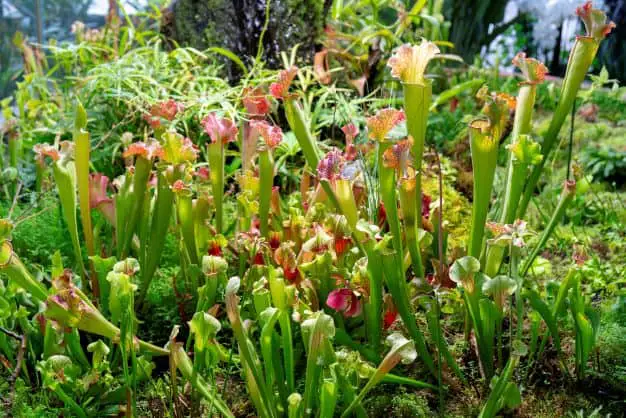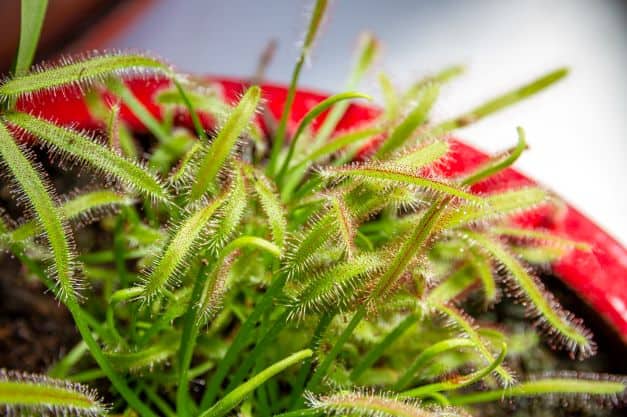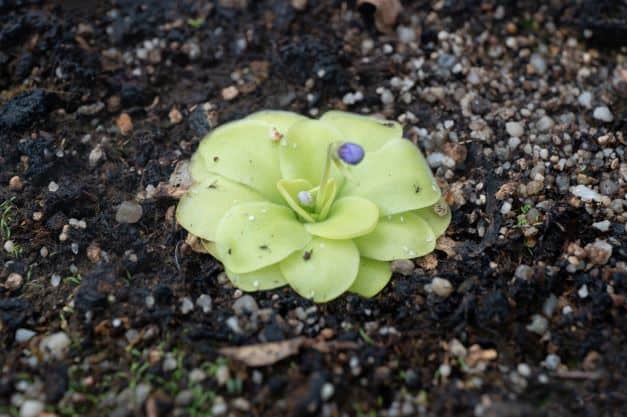There is a load of information out there regarding carnivorous plants. With that wealth of information comes a lot of uncertainty on the subject. It can be difficult to ascertain whether carnivorous plants are dangerous to humans. But don’t worry; I have done the research on this topic, and we will examine it in depth.
Are carnivorous plants dangerous to humans? No. Carnivorous plants are not dangerous to humans to any extent. They are capable of eating insects and small mammals like frogs and rodents. Some will even eat tiny bits of human flesh if we feed it to them. However, they do not pose any threat to humans.
Carnivorous plants are extremely interesting, and their eating habits are complex. Continue reading to find out about more information about carnivorous plants’ eating habits, why they pose no danger to humans, and more.
Carnivorous Plants Are Harmless To Humans
What many find hard to believe is that carnivorous plants pose no harm to humans. They are dangerous to lots of living things, namely small mammals, frogs, and insects, but humans are not on the menu.
In fact, humans are dangerous to carnivorous plants. Humans are often the aggressors. We trample them, uproot them, trigger them, and when we own them, oftentimes we don’t take good care of them. We starve them of sunlight, give them tap water, and the list goes on and on.
Why Aren’t Carnivorous Plants Dangerous to Humans?
So, now we will answer the “why” question.
Carnivorous plants are not dangerous to humans mainly because it takes an extraordinarily long span of time for carnivorous plants to digest their food. It would take weeks for a carnivorous plant to start to digest the tip of a human finger. And because we are alive and well, by the time the plant begins to try to break the finger down, the finger would be unaffected, as it would be healing faster than the plant can break it down.
The prey of carnivorous plants have two things in common. They are usually dead and small. Tiny dead insects are small enough for the plant to digest, and they cannot heal themselves because they are already dead.
How Carnivorous Plants Are Dangerous
While carnivorous plants aren’t dangerous to us, they are very dangerous to some of the tiniest insects, mammals, and reptiles.
Some of the most dangerous carnivorous plants are Venus Flytraps, Sarracenia, and Sundews. Venus Flytraps trap their prey between two leaves that enclose them before digesting them. Sarracenia have a pitcher that insects get trapped in. Sundews use tentacles to trap their prey.
These plants take varying amounts of time to trap and break down their food, and they all trap different types of prey.
Interesting fact: Some carnivorous plants have trapped mammals like rats and reptiles like frogs on accident. The issue with trapping larger prey than intended is that carnivorous plants can only digest food up to a certain size.
Carnivorous Plants You Thought Were Dangerous To Humans
Venus Flytraps
General Information
Venus Flytraps, which have the scientific name Dionaea muscipula, are perhaps the most well known of all carnivorous plants. They originated the subtropical wetlands in North Carolina and South Carolina. However, they are found virtually all over the world.
Safe For Children To Be Around
If a child puts his finger inside a venus flytrap, the flytrap will chomp down on it, but no harm will come to that child. The plant is physically unable to hold onto the child’s finger. The child can then pull the finger out of the plant without any pain or discomfort. So, these flytrap plants are safe for children to be around.
However, the issue that arises when children touch flytraps is that every time the flytrap closes its leaves around an object and reopens, lots of energy is used. If this happens repeatedly, it could be very unsafe for the plant and lead to weakness and death.
Eating Habits
The venus flytrap has two short leaves that have trigger hairs (also called sensitive hairs) which are very important to the plant’s livelihood. Whenever something touches those trigger hairs, the venus flytrap’s leaves rapidly shut to trap the invader.
What’s interesting is how intelligent this plant is. The trap doesn’t close completely at first. It stays partially open for a few seconds to allow insects that are too small to escape. It’s believed that if the insect is too small, the mean wouldn’t be satisfying for the plant, so it lets it go.
If the insect that is caught is too large, the bacteria and mold that the dead insect excretes will kill off the flytrap.
If the meal is the right size, the trap will form an airtight seal around it and begin to digest it. Digestive juices will begin to surround the insect and start to break the insect down. Over the course of 5 to 12 days, the plant will fully digest the inside of the insect. And at the end of digestion, the digestive juices will be reabsorbed, and the plant will spit out the insect’s exoskeleton.
Plant Care
If you were worried about these plants being dangerous, you can relax. They are perfectly safe to be around. You can even plant and care for them at home.
Below are some tips for caring for your own flytraps:
- Venus flytraps need a lot of light. About 4 hours of direct sunlight per day is the minimum with 6 to 8 hours being ideal. To make sure that your flytrap gets enough light, you can either keep it outside or keep it under artificial sunlight for the required time.

- Flytraps need clean water. Tap water is not clean enough for this plant. If you give it tap water, it could die. Instead, use distilled water, rainwater, or reverse-osmosis water for your flytrap. If you’d rather try to use tap water, you can test your tap water to see if it is fit for your flytrap. A TDS meter is the perfect instrument to use to test your water; a good measurement to maintain is between 50 ppm and 100 ppm.

- The soil needs to be nutrient-poor, as your flytrap cannot survive in nutrient-rich soil. Some good soil choices are peat moss or sphagnum moss.
- At the end of summer and the beginning of fall, it’s important to provide your flytrap with a dormancy period that lasts three to five months. If you don’t allow this dormancy period, your flytrap will get weak and die.
- Feed your flytrap according to its size. If you have a large flytrap, you can feed it the following:
- grasshoppers
- crickets
- millipedes
- small beetles
- spiders
- suitably sized slugs.
If you have a smaller flytrap, you should feed it food that can easily inside the trap. Animals like ants and flies work well in this case.
Sarracenia
Origination
Sarracenia (also called pitcher plants) are carnivorous plants that are usually found in bogs in the northeastern part of North America. Sarracenia have large, pitcher like leaves that also mimic flowers. These false flowers act as a lure for small insects.
Eating Habits
When a fly or some other small insect flies or crawls on the leaves of this plant, it is met with a waxy surface. This surface is slippery and causes the insect to fall into the inner part of the plant, which is filled with water.
Sarracenia have several built-in ways to try to keep insects trapped once they fall in. Their leaves have steep sides, a slippery and sticky interior, and downward-pointing hairs. All of these make it hard for the plant’s food to escape.
Once the insect is effectively trapped, bacteria living in the pitcher provide digestive enzymes to help with breaking the food down. Digestive juices do not play a big role in how the Sarracenia consumes its prey.
Plant Care
Below are some important tips to take into consideration before adding a Sarracenia to your home garden.
- Light is very important for Sarracenia. They need five or more hours a day of direct sun. It is strongly recommended that you grow sarracenia outdoors due to their need for strong sun. You may try to grow your plant indoors, but it may not thrive.
- The soil for your Sarracenia should be kept moist to wet and shouldn’t be allowed to dry out. The water should not be salty.
- Putting your Sarracenia in a container is the most appropriate way to store it. Containers help to keep the plant hydrated. Whenever your Sarracenia appears to be getting crowded, you should re-pot the plant.
- A dormancy period is necessary for Sarracenia. A cold dormancy lasting between 2 and 4 months is most appropriate.
- Do not feed your Sarracenia. Placing the plant outside and allowing it to feed itself is best.
Sundews
Sundews are a lesser-known carnivorous plant that you’re sure to find interesting. This plant has slender leaves covered in tentacles (hairs) that have sticky glands at the tips. These hairs help the plant sense and catch prey.
When an insect makes contact with one of the tentacles, the other tentacles wrap around the prey and smother it.
The glands at the tips of the tentacles have three functions. First, they produce nectar to help attract prey to it. Second, they produce a sticky substance to help trap prey. Third, these glands produce digestive juices to help break down the prey.
Sundews eat mosquitoes most of the time. It takes about 15 minutes for a sundew to trap an insect. It may take weeks for it to completely digest the insect.
Plant Care
Some pointers to help you care for your Sundew are below:
- Sundews do well in full to part sun. They need several hours of direct sunlight each day and the rest of the time; the plant should be getting bright filtered light. Fluorescent lights are appropriate for Sundews. Keep in mind that anytime that the plant is in full shade, it is detrimental to the plant.
- Protect your Sundew. Sundews are sensitive to excessive wind, freezing temperatures, and harsh sunlight. Keeping your sundew indoors will make it easy to protect it. If you live in a tropical climate, where the temp is almost always above 55 degrees Fahrenheit, then it is perfectly fine to keep your sundew outside.
- Soil requirements are strict. You’ll need to use both peat moss and perlite. You should use equal parts peat moss and perlite to create the perfect home for your sundew. You should not use fertilizer, potting soil, or compost, as these will cause your plant to die.
Butterworts
Origination and Types
Butterworts, which are scientifically named Pinguicula, are thought to have originated in Central America. Also, roughly half of all butterwort species are currently found there.
You can also find butterworts all throughout the northern hemisphere. They make their mark in North America, Central America, South America, Siberia, and many other regions.
There are two types of butterworts: heterophyllous and homophyllous. Homophyllous butterworts have a consistent growth pattern throughout the year, while heterophyllous butterworts change the shapes of their leaves as the seasons change.
Eating Habits
Butterworts have a peculiar way of securing their meals. They are the plant equivalent to sandpaper, sporting flat leaves that have what appears like a sticky coating on them.
The plant’s coating has dual functions. First, the sticky coating helps trap insects that make contact with the plant. Second, the coating also acts as a stomach.
When an unfortunate insect makes contact with the Butterwort, it gets stuck to the sticky coating and then begins to be broken down by the substance that is excreted by the glands.
The substance breaks down the digestible parts of the insect and then reabsorbing the insect’s fluids. The exoskeleton of the insect is left on the surface of the butterwort’s leaves.
Plant Care
If you want to keep a butterwort plant at home, you’ll need to do the following:
- Make sure that the plant gets enough light. Putting the plant in a windowsill would ensure that enough sun is absorbed by the plant. Protect the plant from the harshest sunlight.
- As far as substrates go, you should mix 10% charcoal with 40% peat and 40% vermiculite. This mixture will ensure that the plant has adequate moisture and that draining can occur quickly when necessary.
- The general recommendation for butterwort watering is to keep their pots in one inch of water between March and November. For the remainder of the year, keep your butterwort moist.
- Don’t feed your butterwort anything. It’s best to allow the plant to fend for itself. If you feed your plant, be prepared for it to be negatively affected and watch out for signs of distress.
How Carnivorous Plants are In Fact In Danger
While many wonder whether carnivorous plants are a danger to humans, these plants are in danger. According to a researcher from the University of Notre Dame, about half of the carnivorous plant species assessed were found to be endangered.
The main reason that the plants are endangered is because of habitat loss from agriculture. Another reason for endangerment of carnivorous plants is the collection of wild plants. Other reasons for such widespread devastation is pollution and natural systems modification.
So, it seems that between humans and carnivorous plants, we humans are the aggressors.
Why Do Carnivorous Plants Eat Meat?
Some may wonder why Carnivorous plants eat the meat of insects, small animals, and reptiles.
Well, the answer is really straightforward.
Most plants are able to get the nitrogen that they need from nutrient-rich soil. However, carnivorous plants are unique in that they don’t get nitrogen from soil. The reason that they don’t get nitrogen from the soil is that they evolved in nutrient poor soil. Since carnivorous plants are deficient in nitrogen, they eat meat to get nitrogen. They use this nitrogen to help themselves grow.
Where You Can Find Carnivorous Plants
In the wild, carnivorous plants are all over the world. You’ll find them on every continent except Antarctica. You’ll find them out in rural areas and in urban centers. Basically, wherever all of their needs can be met, you’ll find carnivorous plants.
If you want to buy a carnivorous plant, there are many places that you can explore.
Explore the following places:
- Online plant stores are plenty. A simple browsing session can yield thousands of online shops for carnivorous plants.
- You can shop on Amazon.com to purchase either carnivorous plant seeds or a living carnivorous plant. The good thing about shopping on Amazon is that you can see honest reviews on the seeds or plants.
- Etsy.com also has a variety of carnivorous plants and seeds available from various sellers.
- Check your local farmer’s market to see if they have any carnivorous plants for sale. This way you can speak with the seller about the plants and get expert tips.
- Go to your local Lowe’s Garden Center (or any other department store garden center) to see if they have any carnivorous plants for sale.
- Your local flower shop just might have some carnivorous plants for sale.





